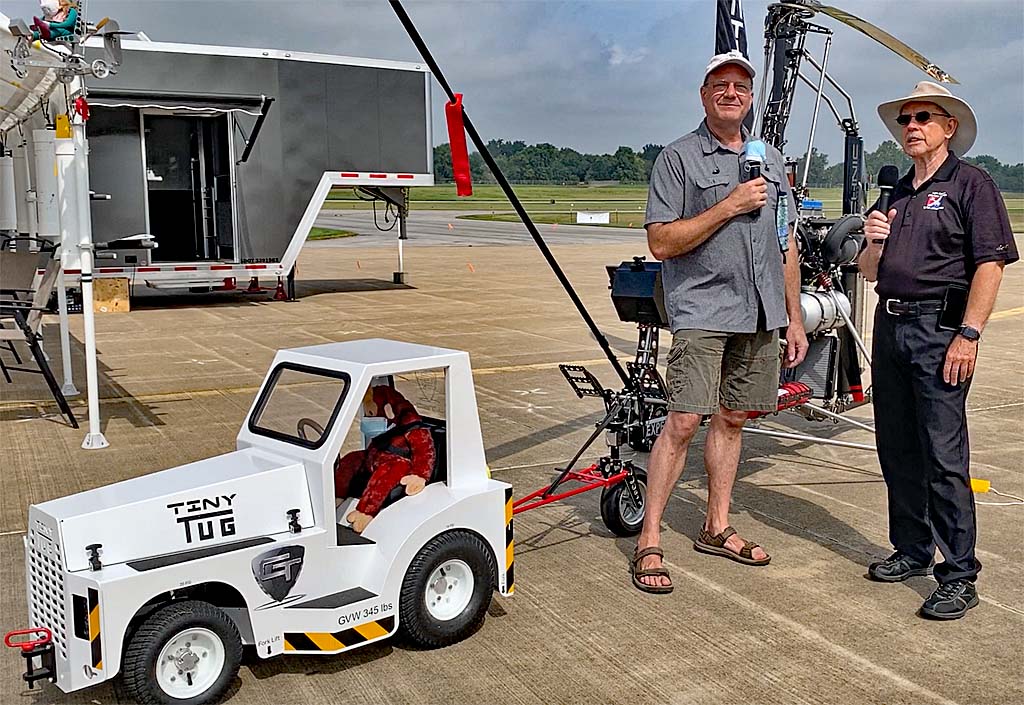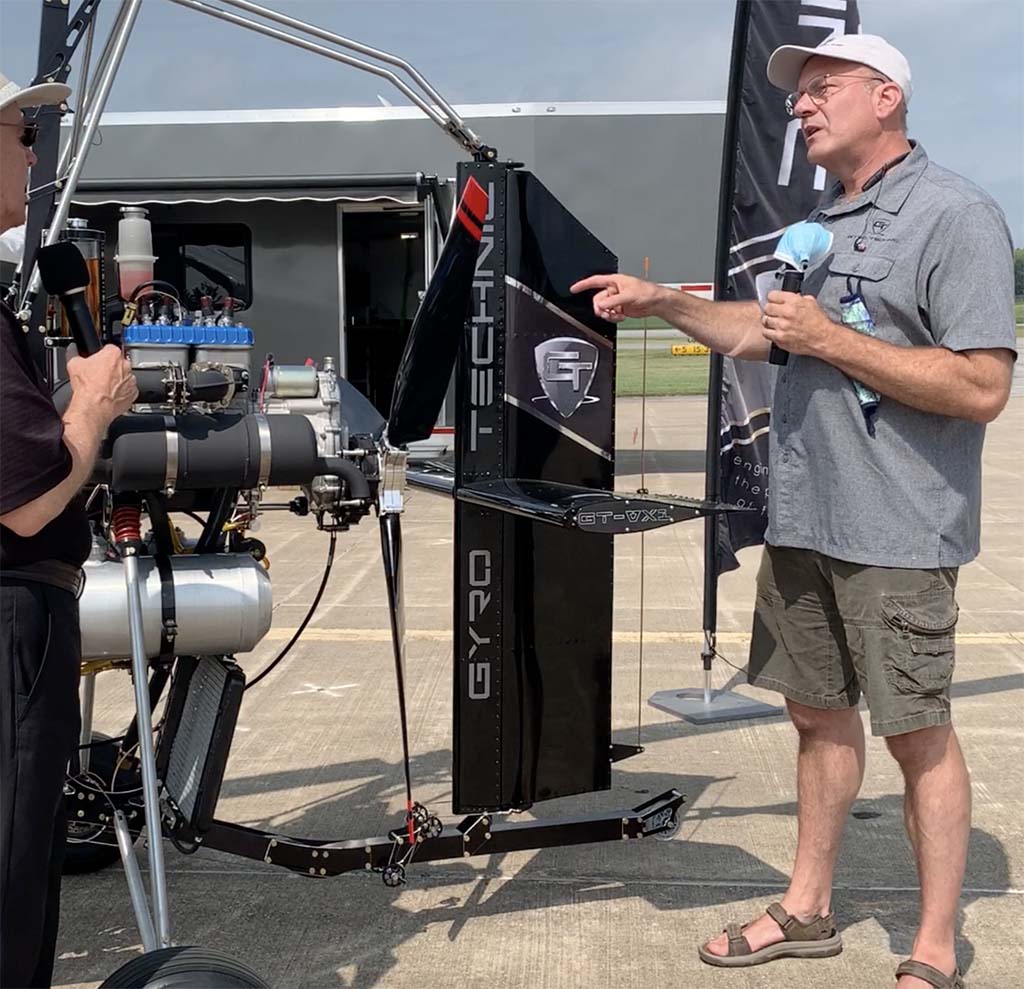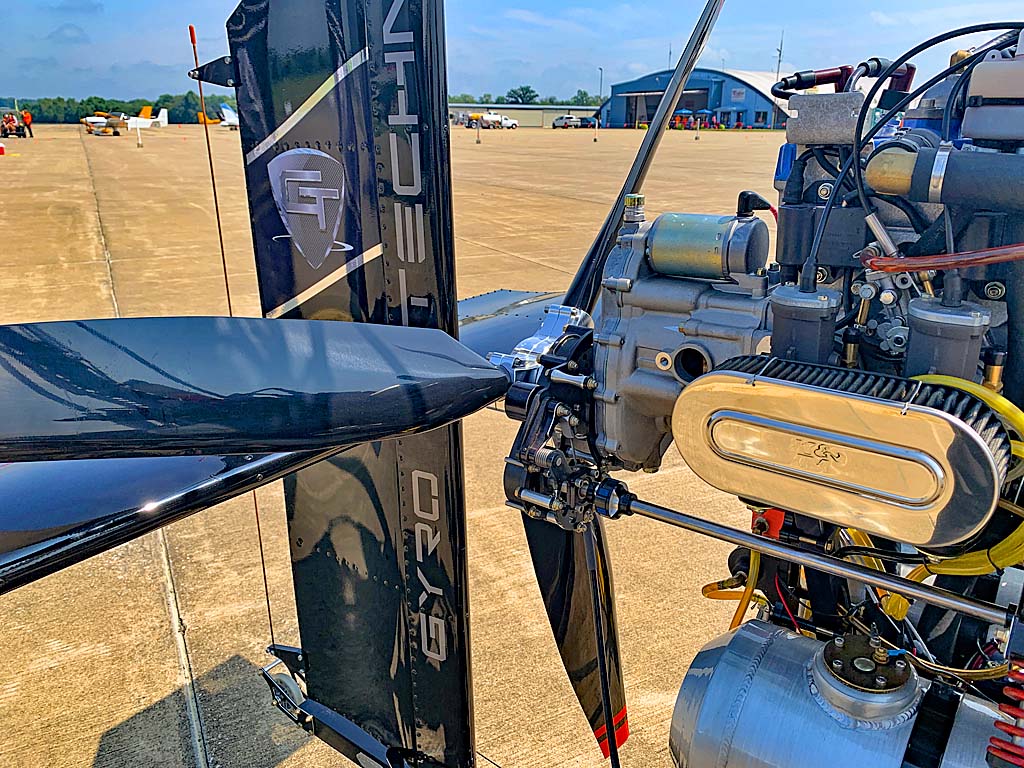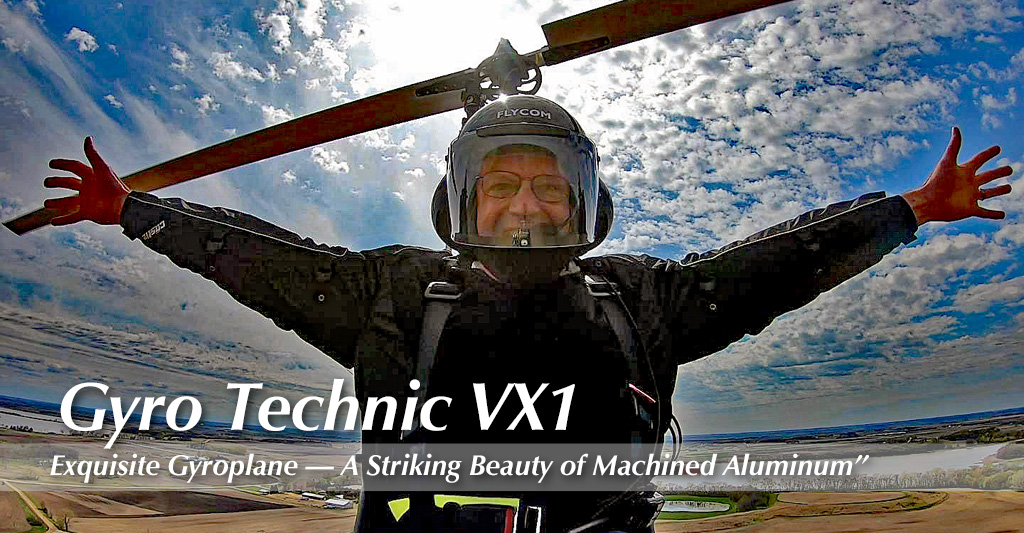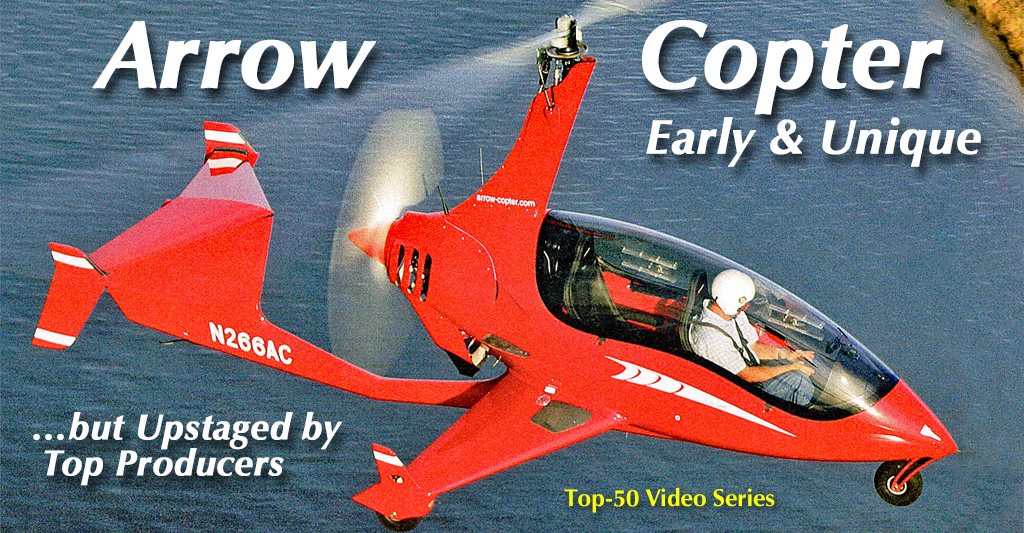
A dozen years ago, fixed wing pilots thought very little about “gyrocopters” — as some people called them. Actually that word is a model name established by Igor Bensen, widely thought of as the father of this activity along with Juan de la Cierva of Spain, known for his pioneering autogyro work. The preferred term these days is “gyroplane.” Names aside, what pilots care about is having fun in the air and being able to afford a flying machine. When an aircraft also looks terrific, heads turn. From eleven years ago comes the #3 in our list of Top 50 Aircraft Videos. More than 450,000 views of this video show broad interest in ArrowCopter, quite the head turner in its day. Gyroplane interest grew quickly after European designers took the lead from American manufacturers. Think back to the days of Ken Brock’s gyro or the former Air Command (now under new management).


 The preferred term these days is "gyroplane." Names aside, what pilots care about is having fun in the air and being able to afford a flying machine. When an aircraft also looks terrific, heads turn.
The preferred term these days is "gyroplane." Names aside, what pilots care about is having fun in the air and being able to afford a flying machine. When an aircraft also looks terrific, heads turn.
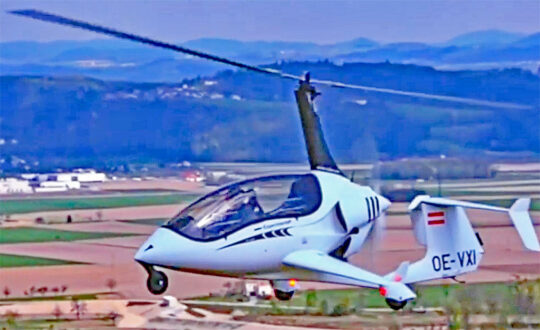 From eleven years ago comes the #3 in our list of
From eleven years ago comes the #3 in our list of 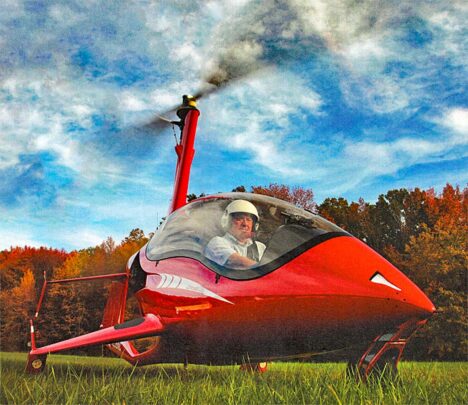 Great detail is unnecessary since you cannot buy a new ArrowCopter and I know of no used ones for sale although at least two were sold into the United States (they appear in pictures). Still, it's worthwhile to look at some of its unique qualities.
American gyroplane enthusiasts first saw ArrowCopter back in 2014, only three years after its maiden flight. If you were at Bensen Days that year and admired ArrowCopter, you may be aware you've seen nothing since.
Great detail is unnecessary since you cannot buy a new ArrowCopter and I know of no used ones for sale although at least two were sold into the United States (they appear in pictures). Still, it's worthwhile to look at some of its unique qualities.
American gyroplane enthusiasts first saw ArrowCopter back in 2014, only three years after its maiden flight. If you were at Bensen Days that year and admired ArrowCopter, you may be aware you've seen nothing since.
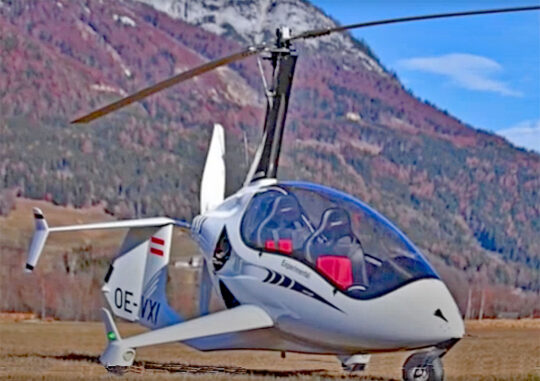 ArrowCopter's aerodynamically shaped landing gear strakes provide lift in horizontal flight, claimed some reviewers, and serve as fuel tanks. This design feature is one of several distinctive ideas that ArrowCopter designer Dietmar Fuchs incorporated.
As ArrowCopter accelerated down the runway, pilots looked for 60 mph (52 knots) and 340 rotor rpm. At that point ArrowCopter is ready to launch. Climb out occurs at 60 mph while cruise speed is 99 mph (86 knots). ArrowCopter's never-exceed speed was 120 mph (104 knots).
Non-gyroplane pilots may not find that particularly fast. Certainly, it is not compared to a fixed-wing, high-powered mLSA aircraft. As gyros go, though, that's fairly quick. It's smooth lines explain much.
What you should know is that gyroplanes are some of the best aircraft in recreational aviation at performing well in stronger winds. This is true of all gyroplanes, not only ArrowCopter.
ArrowCopter's aerodynamically shaped landing gear strakes provide lift in horizontal flight, claimed some reviewers, and serve as fuel tanks. This design feature is one of several distinctive ideas that ArrowCopter designer Dietmar Fuchs incorporated.
As ArrowCopter accelerated down the runway, pilots looked for 60 mph (52 knots) and 340 rotor rpm. At that point ArrowCopter is ready to launch. Climb out occurs at 60 mph while cruise speed is 99 mph (86 knots). ArrowCopter's never-exceed speed was 120 mph (104 knots).
Non-gyroplane pilots may not find that particularly fast. Certainly, it is not compared to a fixed-wing, high-powered mLSA aircraft. As gyros go, though, that's fairly quick. It's smooth lines explain much.
What you should know is that gyroplanes are some of the best aircraft in recreational aviation at performing well in stronger winds. This is true of all gyroplanes, not only ArrowCopter.
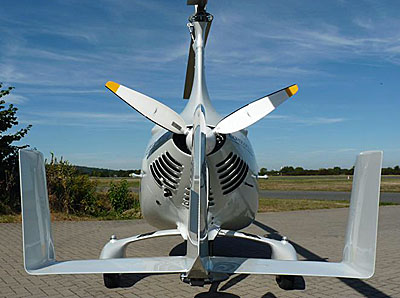
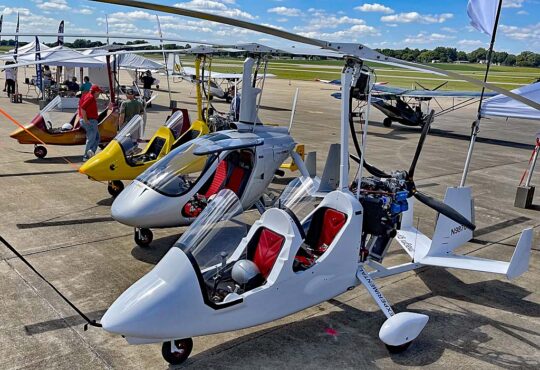
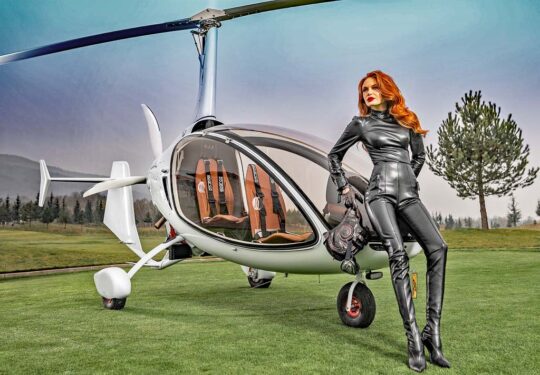
 Here is the video that ranked so high with YouTube enthusiasts:
https://youtu.be/FvBBV6d1fEM
Here is the video that ranked so high with YouTube enthusiasts:
https://youtu.be/FvBBV6d1fEM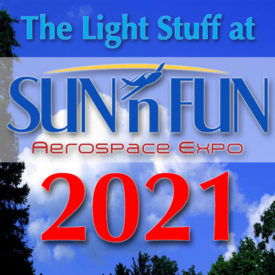 We continue with further coverage from the first major airshow in almost two years… THANKS to
We continue with further coverage from the first major airshow in almost two years… THANKS to 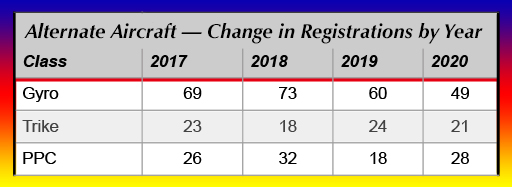 Counting all types, the "alternative aircraft" sector may account for a quarter or more of all LSA sales. Alternative aircraft have attributes that drive customer inquiries: better affordability and unique flying qualities.
Not interested in alternative aircraft? That's hardly surprising as most American pilots were trained in conventional, three-axis, tractor-engined aircraft, usually with a control wheel and rudder pedals. Most of those pilots will stick with a familiar configuration and therefore the LSA market caters to that large pilot community. Others yearn for something different or something more affordable.
Counting all types, the "alternative aircraft" sector may account for a quarter or more of all LSA sales. Alternative aircraft have attributes that drive customer inquiries: better affordability and unique flying qualities.
Not interested in alternative aircraft? That's hardly surprising as most American pilots were trained in conventional, three-axis, tractor-engined aircraft, usually with a control wheel and rudder pedals. Most of those pilots will stick with a familiar configuration and therefore the LSA market caters to that large pilot community. Others yearn for something different or something more affordable.
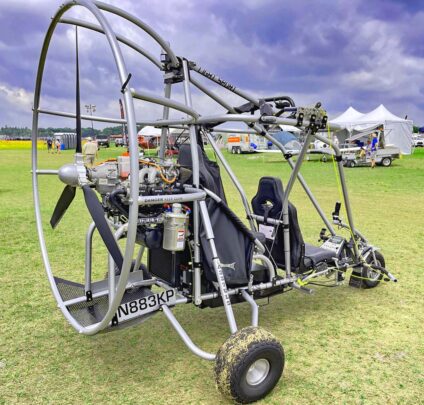 Powrachute Powerhouse
Powrachute Powerhouse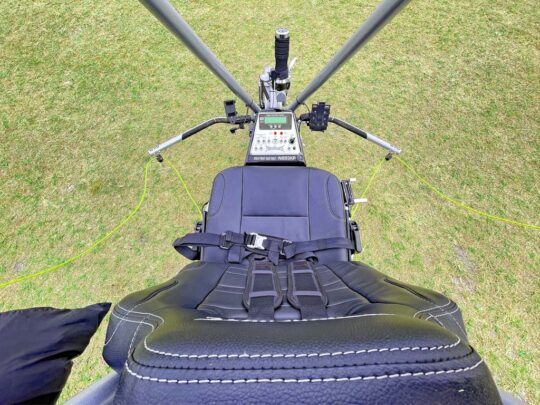
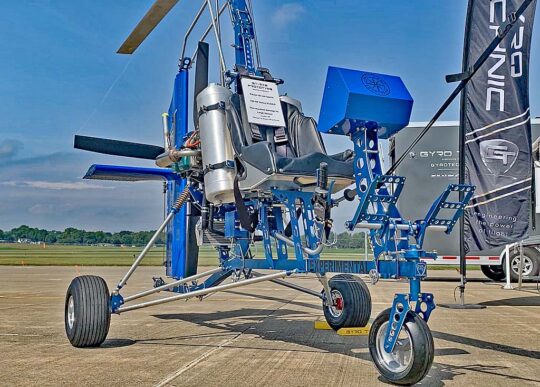 While the idea may have been invented many years ago in the USA, Europeans adopted the type in the 2000s and took the idea further. They also worked out flight characteristics to make these contemporary machines easier to fly. My experience with them (see this
While the idea may have been invented many years ago in the USA, Europeans adopted the type in the 2000s and took the idea further. They also worked out flight characteristics to make these contemporary machines easier to fly. My experience with them (see this 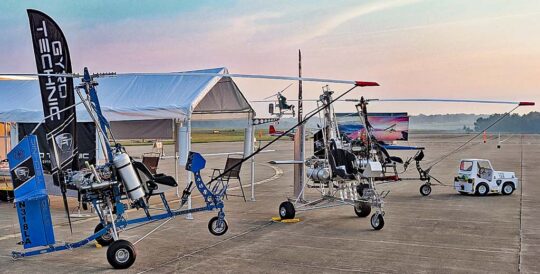 Those older American gyroplanes — think: Bensen Gyrocopter — were nearly all single seaters. Maybe that was best then, when stability was different than today. Then I discovered the VX1 at the Midwest LSA Expo. Hmmm, a modern gyroplane with all the present-day knowledge but in single seat form. Intriguing. It doesn't look like other modern gyros and the video below will explain.
Lots of buyers want a second seat for a friend or their spouse yet more often than not aircraft are flown solo. A single seat aircraft has some advantages and the pilot can merely enjoy him or herself without have to assure their passenger is comfortable. Single seaters can also cost less partly because they don't need as much engine.
Combine these attributes with some of the finest, beautifully-accented machine work you'll ever see and Gyro Technic truly has something in their VX1. Finally, the Minnesota company is rare in that it also makes its own rotor blades and can supply other producers.
Those older American gyroplanes — think: Bensen Gyrocopter — were nearly all single seaters. Maybe that was best then, when stability was different than today. Then I discovered the VX1 at the Midwest LSA Expo. Hmmm, a modern gyroplane with all the present-day knowledge but in single seat form. Intriguing. It doesn't look like other modern gyros and the video below will explain.
Lots of buyers want a second seat for a friend or their spouse yet more often than not aircraft are flown solo. A single seat aircraft has some advantages and the pilot can merely enjoy him or herself without have to assure their passenger is comfortable. Single seaters can also cost less partly because they don't need as much engine.
Combine these attributes with some of the finest, beautifully-accented machine work you'll ever see and Gyro Technic truly has something in their VX1. Finally, the Minnesota company is rare in that it also makes its own rotor blades and can supply other producers.
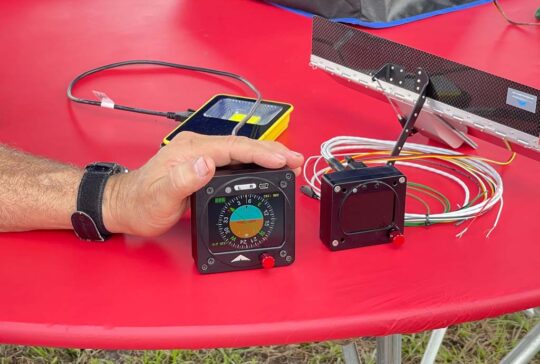 Levil Aviation greatly empowered the role of tablets in the cockpit today by pioneering the first iPad-compatible wireless avionics suite in 2009. Today's
Levil Aviation greatly empowered the role of tablets in the cockpit today by pioneering the first iPad-compatible wireless avionics suite in 2009. Today's 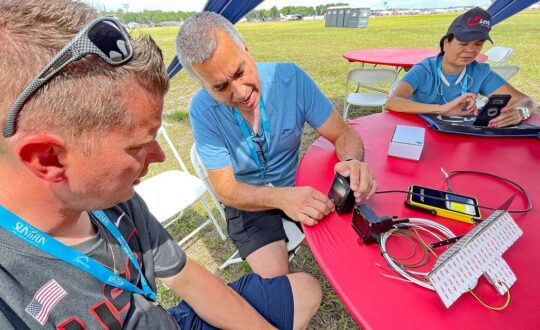
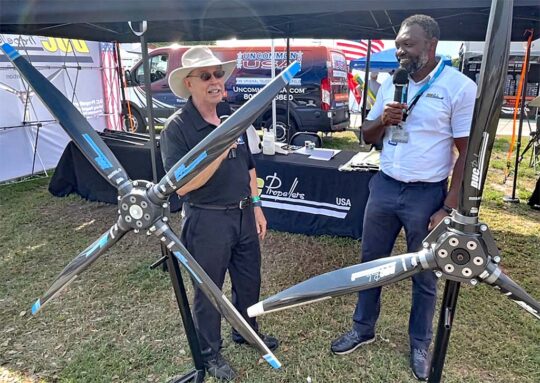 Duc Prop Success Story
Duc Prop Success Story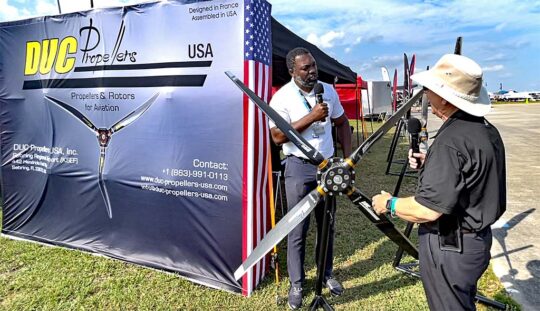 Of course, he is a sales and service outlet for Duc Hélices. Manufacturing occurs in Frontenas, France. According to Gaetan, the French enterprise is humming at its still-new
Of course, he is a sales and service outlet for Duc Hélices. Manufacturing occurs in Frontenas, France. According to Gaetan, the French enterprise is humming at its still-new 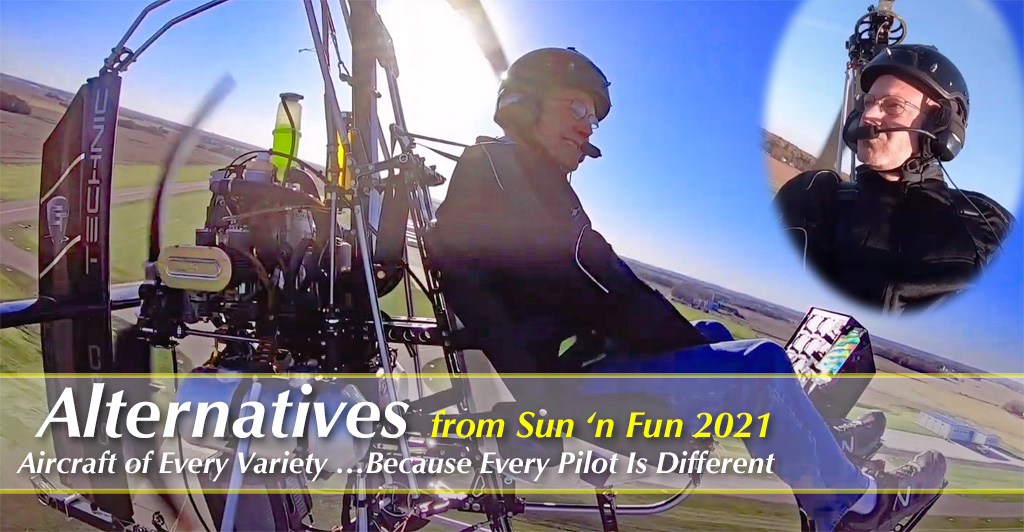
 Another designer of very striking hardware is Larry Mednick of
Another designer of very striking hardware is Larry Mednick of 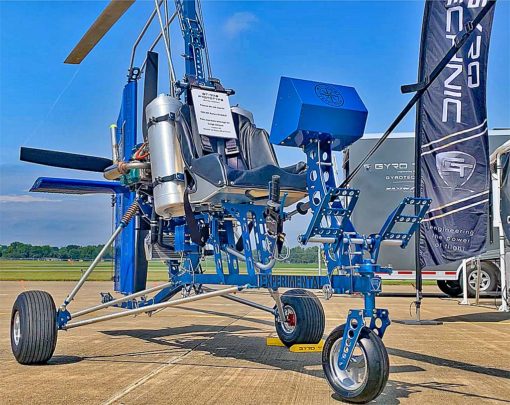 With an active business doing robotics and custom automation, VX1 designer and company boss, Denis Shoemaker is attuned to a fine grade of finish quality. He explained that he anodized the parts seen in the photos but then returned the parts to the shop to machine chamfer edges to give them a gleam that contrasted beautifully with the blue or black anodizing.
"Yeah, it really pops, doesn't it," agreed Denis when I admired the look.
We spent some time talking in a video interview (to follow) about the close proximity of the tailplane and how VX1 differs from most modern gyroplanes.
Denis observed that most modern gyroplanes use an extended tail with multiple vertical surfaces. How can his design function with a much different design?
With an active business doing robotics and custom automation, VX1 designer and company boss, Denis Shoemaker is attuned to a fine grade of finish quality. He explained that he anodized the parts seen in the photos but then returned the parts to the shop to machine chamfer edges to give them a gleam that contrasted beautifully with the blue or black anodizing.
"Yeah, it really pops, doesn't it," agreed Denis when I admired the look.
We spent some time talking in a video interview (to follow) about the close proximity of the tailplane and how VX1 differs from most modern gyroplanes.
Denis observed that most modern gyroplanes use an extended tail with multiple vertical surfaces. How can his design function with a much different design?
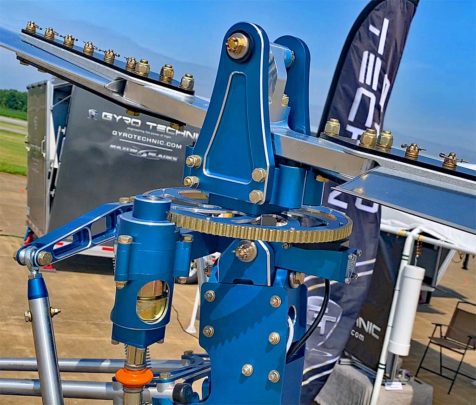 It has to do with the pod or cabin that most modern gyroplanes use. VX1 is an open cockpit design. All that fuselage area forward of CG needs more tail in the rear to offset the aerodynamic effects. Since VX1 has a fully open cockpit, it does not need the same tail displacement.
Clearly, Gyro Technic's VX1 is no mere copy of some other gyro.
In addition to making all their own parts (
It has to do with the pod or cabin that most modern gyroplanes use. VX1 is an open cockpit design. All that fuselage area forward of CG needs more tail in the rear to offset the aerodynamic effects. Since VX1 has a fully open cockpit, it does not need the same tail displacement.
Clearly, Gyro Technic's VX1 is no mere copy of some other gyro.
In addition to making all their own parts (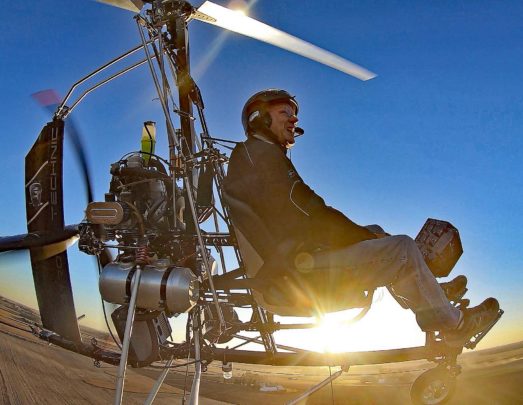 "A comfortable cruise speed is about 60 mph. Full fuel tanks (7.5 gallons) will then give you a range of 50+ miles with a safe fuel reserve.
"This would be a straight-line course to your destination. In reality though, you will be having too much fun, and your flight path will not be a straight line, but rather resembling something closer to a bowl of spaghetti!"
Ha! Good description of the flight path of a pilot just enjoying the experience and not intent on getting from here to a destination as the only reason to fly. Visibility from a gyro like VX1 is about as open as it gets.
At
"A comfortable cruise speed is about 60 mph. Full fuel tanks (7.5 gallons) will then give you a range of 50+ miles with a safe fuel reserve.
"This would be a straight-line course to your destination. In reality though, you will be having too much fun, and your flight path will not be a straight line, but rather resembling something closer to a bowl of spaghetti!"
Ha! Good description of the flight path of a pilot just enjoying the experience and not intent on getting from here to a destination as the only reason to fly. Visibility from a gyro like VX1 is about as open as it gets.
At 